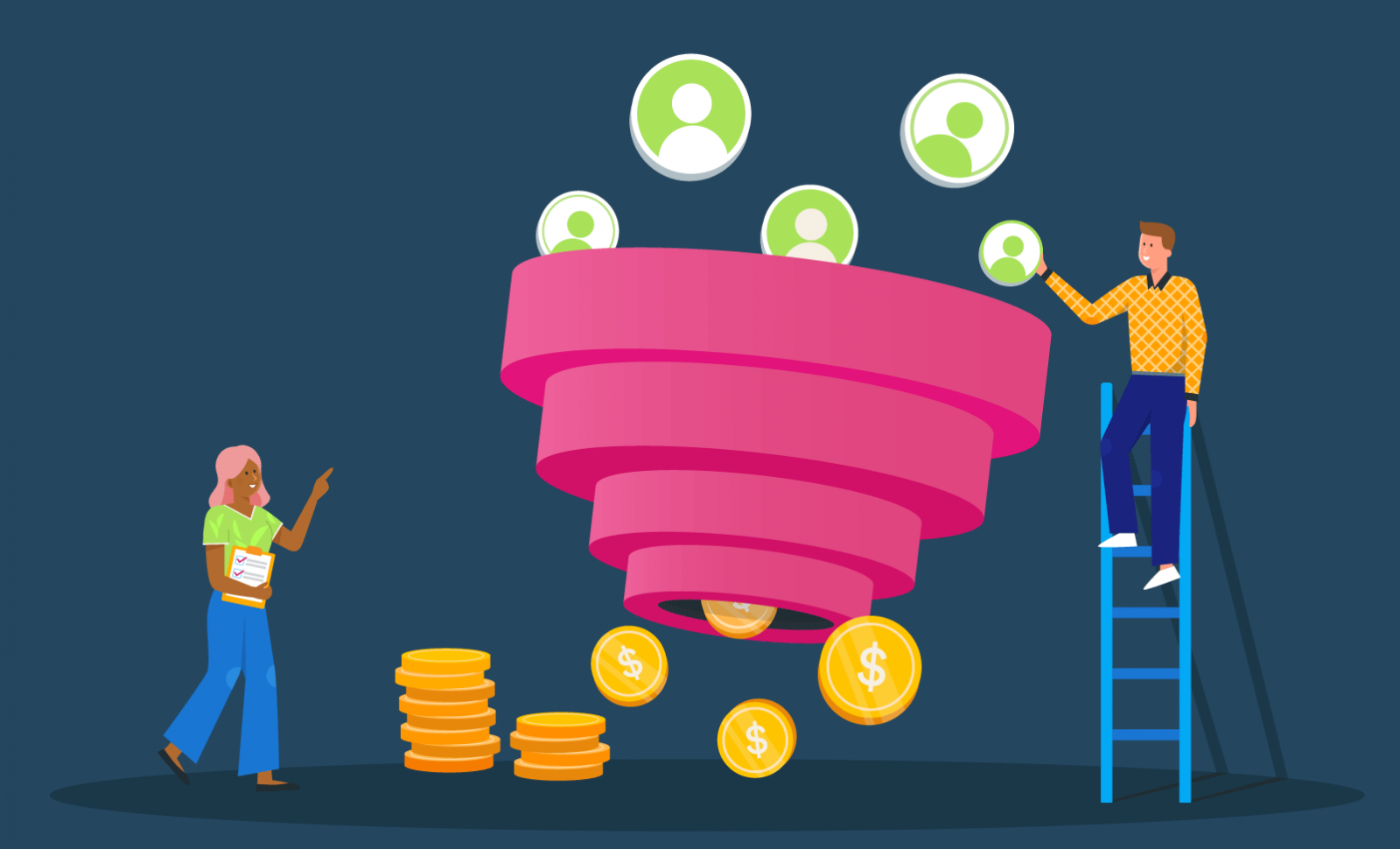1. What is a sales pipeline?
A sales pipeline is a visual representation that shows the step-by-step buying process from a lead to a customer who buys a product. This helps categorize the different stages of the sales process and track the progress of individual sales opportunities or deals.
The main purpose of the sales pipeline is to assist sales teams in managing, monitoring and optimizing their interactions with prospects, to improve their ability to close deals and generate revenue.
Key stages in the sales pipeline include:
Generate leads: Identify and attract potential customers who are or are interested in your business's products and services.
Review leads: Evaluate the quality and suitability of leads to determine whether they meet the criteria for potential sales.
Needs analysis: Find out the needs, “difficult” requirements and other specific requirements of potential customers.
Proposal/Presentation: Present solutions or solutions that suit customer requirements. At the same time, show the value that proposal can bring to the business.
Negotiation: Develop discussions to come up with appropriate policies and resolve issues that may affect the company, negotiate terms...

Closing: Ensures the customer's commitment to purchase or fulfill the customer's desired needs.
Post-sale follow-up: Provide support services, address any concerns after goods have been delivered, and foster positive relationships with returning customers.
It can be said that sales pipeline management involves tracking and analyzing the progress of each transaction in different stages. The goal is to ensure that no opportunities are missed and to focus efforts on the most promising opportunities. This also helps identify potential problems in the sales process, areas for improvement, and opportunities for process optimization.
Effective management of the sales process can predict future revenue, intelligently allocate resources, and make sound decisions to drive sales growth and deliver business success.
2. Key aspects of Sales Pipeline analysis
The main parts of a sales pipeline analysis involve examining different elements of the sales process to optimize efficiency and improve performance. Includes things like tracking progress, identifying trends, setting goals, and forecasting sales. Here are the key metrics to consider:
Analyze progress by stage: Evaluate the transition of leads from one stage to the next in the sales process to detect bottlenecks and ensure a smooth sale shall. The goal is to identify the causes of bottlenecks or delays and find solutions to optimize the sales process.
Conversion rate: Analyzing conversion rates at each stage helps measure the number of leads that successfully move to the next stage and eventually become actual customers.
Deal value: Categorize the potential value of each deal to prioritize high-value opportunities and consider the most appropriate resource allocation.
Time for stages: Analyzing the average time of each stage in the sales process helps identify and speed up long stages, while improving process performance.
Lead source efficiency: Identifying the most effective lead source or channel in the sales process helps focus development and optimization of marketing activities. Focusing on the most successful sources or channels helps optimize resources and efforts to effectively attract and convert leads.
Win-Loss Analysis: Study completed trades to understand why some trades Win and others Lose. Thereby, fine-tune your business's sales strategies and address potential disadvantages.
Sales Velocity: Measures the average time a deal takes to go from initial contact to completion. The goal is to speed up sales by optimizing the process, helping transactions get completed faster and more efficiently.
Forecasting: Use historical data and trends to predict future revenue and sales. This aids in budgeting, resource allocation and strategic planning, helping to optimize business processes and achieve revenue goals.
Team Performance: Analyze how sales teams perform in the process. Identify areas for improvement and opportunities for training, to enhance performance and achieve sales goals.
Communication and follow-up: Evaluate the sales team's communication and lead follow-up effectiveness at each stage, ensuring consistent engagement and strong results.

Optimize CRM: Evaluate the support ability of Customer Relationship Management (CRM) software in monitoring and managing the system. Identify gaps or issues that need improvement in data entry and reporting.
Process customization: Adapt the stages, labels, and fields of your pipeline to fit your business's specific process and business needs.
Goal setting: Set realistic goals for each stage of the process, such as number of new leads, conversion rate, or revenue achieved.
Continuous improvement: Regularly review and update analytics to adapt to constantly changing market conditions, customer behavior, and business goals.
Careful analysis of these aspects of the sales process helps identify areas that need optimization, refinement, and improvement. This assists businesses in improving their sales processes, increasing overall performance and generating revenue.
Analyze Sales Pipeline vs. Sales Funnel Analysis
Sales Pipeline and Sales Funnel are both important concepts in the field of sales and marketing, but they focus on different parts of the business process and customer journey.
Here's a breakdown of the differences between the two:
| Side | Sales Pipeline Analysis | Sales Funnel Analysis |
|---|---|---|
| Concentrate | Manage each specific sales stage. | The entire customer journey from product recognition to becoming an actual customer. |
| Limit | Specific sales opportunities | The entire customer interaction process |
| Purpose | Improve sales process efficiency | Optimize the purchase journey for higher customer conversion rates. |
| Data | Transaction value, conversion rate, time of each stage. | Lead generation, conversion rates, customer behavior. |
| Result | Increase sales speed, improve transaction management. | Better targeted marketing, enhanced conversion strategies. |
| Main concern | Efficiently adjust transactions through each stage. | Interact more with customers and optimize conversions. |
| Deployment method | Track and analyze individual transactions. | Analyze the behavior of all buyers. |
| Important decision | Resource allocation, sales team performance. | Marketing strategy, improving customer experience. |
| Tools and Software | CRM system , sales tracking software | Analytics and marketing automation platform. |
| Time | Short-term optimization of specific transactions. | Long-term improvement of all customer experiences. |
Here's a breakdown of the differences between the two:
Remember that choosing between these two analytics depends on your business goals and the specific achievements the business is trying to achieve. Both approaches are valuable for improving sales and customer interactions, but they focus on different stages and aspects of the sales process.












Replies to This Discussion